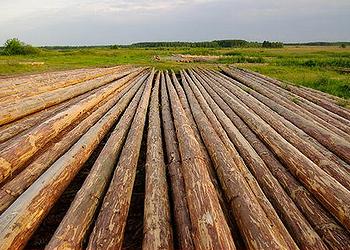
WASHINGTON, DC, February 22, 2014 (ENS) – Global Forest Watch, a new, free online monitoring and alert system for forest management, was launched Thursday by more than 40 organizations, including the World Resources Institute, Google and the UN Environment Programme.
The mapping application provides near-real time, reliable data about what is happening in forests worldwide, using the latest satellite technology, open data, and crowdsourcing information.
“From now on, the bad guys cannot hide and the good guys will be recognized for their stewardship,” said Dr. Andrew Steer, president and CEO, World Resources Institute, WRI, during the launch event held at the Newseum in Washington.

In the years from 2000 through 2012, the world lost the equivalent of 50 soccer fields of forest every minute of every day for entire 12 years, a total of 2.3 million square kilometers (888,034 square miles), according to data from the University of Maryland and Google.
The countries that lost the greatest amounts of forest are: Russia, Brazil, Canada, United States and Indonesia.
Rebecca Moore, engineering manager, Google Earth Outreach and Earth Engine, said Global Forest Watch is an ambitious vision, and yet it’s both timely and achievable given WRI’s knowledge of environmental science and policy, strong partnerships, and the high-performance Google cloud technology that we’re donating to this initiative.”
Cloud computing multiplies the speed at which data can be analyzed.
Global Forest Watch can support indigenous communities, who can upload alerts and photos when encroachment occurs on their lands; and nongovernmental organizations can identify deforestation hotspots and collect evidence to hold governments and companies accountable.
When forest loss alerts are detected, a network of partners and citizens around the world can mobilize to take action.
Global Forest Watch will allow financial institutions to better evaluate if the companies they invest in adequately assess forest-related risks.
Buyers of major commodities such as palm oil, soy, timber, and beef can better monitor compliance with laws, sustainability commitments, and standards. And suppliers can credibly demonstrate that their products are “deforestation free” and legally produced.
Achim Steiner, UN Under Secretary-General and UNEP Executive Director, said, “Managing the world’s forest resources is today both a local and global undertaking, and technology has provided Global Forest Watch with an unprecedented opportunity to connect not only information and data but people, whether they be forest managers, businesses and private sector, or consumers across the globe.”
“This is a great example of a community coming together and providing the world with a truly groundbreaking and pioneering product,” said Steiner. “Hopefully in a few years’ time we will be able to monitor the impact and the results in terms of what actually happens on the ground – that will be both a litmus test and I think the greatest affirmation that the time for this idea had come.”
Governments such as Indonesia and the Democratic Republic of Congo, welcome Global Forest Watch because it can help them design smarter policies, enforce forest laws, detect illegal forest clearing, manage forests more sustainably, and achieve conservation and climate goals.

Heru Prasetyo, who heads the REDD+ agency in Indonesia, says the new tool will help the world “leave neglect and ignorance in the past.”
The UN-backed framework for reducing emissions caused by deforestation and forest degradation, will assign financial value to carbon stored in trees, creating a potential incentive to keep them standing.
The Indonesian REDD+ agency, created in September 2013, reports directly to President Susilo Bambang Yudhoyono.
“Indonesia is committed to reduce its greenhouse gas emissions by 26 percent, or 41 percent with international support, which reflect national and international commitments to combat climate change. How Indonesia meets that commitment is largely defined by how we manage our forests,” said Prasetyo. “The ability to better monitor our forests and have up-to-date information to make decisions are critical.”
For the first time Global Forest Watch will provide annual tree cover loss and gain data for the entire globe at a resolution of 30 meters, available for analysis and download.
Also offered will be monthly tree cover loss data for the humid tropics at a resolution of 500 meters.
Analytical tools include layers showing boundaries of protected areas worldwide; logging, mining, palm oil and other concessions; daily forest fire alerts from NASA; agricultural commodities; and intact forest landscapes and biodiversity hotspots.
Rajiv Shah, administrator of the U.S. Agency for International Development, a core funder, said, “Partnerships like Global Forest Watch that bring together governments, businesses and civil society and technological innovation are the kinds of solutions we need to reduce forest loss, alleviate poverty and promote sustainable economic growth.”
“Deforestation poses a material risk to businesses that rely on forest-linked crops. Exposure to that risk has the potential to undermine the future of businesses,” said Paul Polman, CEO, Unilever. “That is why Unilever’s Sustainable Living Plan has set targets to source 100 percent of agricultural raw materials sustainably. As we strive to increase the visibility of where the ingredients for our products come from, the launch of Global Forest Watch – a fantastic, innovative tool – will provide the information we urgently need to make the right decisions, fostering transparency, enforcing accountability, and facilitating partnerships.”
Global Forest Watch was created by the World Resources Institute with over 40 partners, including Google, Esri, University of Maryland, United Nations Environment Programme, Imazon, Center for Global Development, Observatoire Satellital des Forêts d’Afrique Centrale, Global Forest Watch Canada, ScanEx, Transparent World, the Jane Goodall Institute, and Vizzuality.
Major companies have also provided early input, including Unilever and Nestle, and the wider Tropical Forest Alliance 2020 Partnership.
Core funders include the Norwegian Climate and Forests Initiative, U.S. Agency for International Development, Global Environment Facility, U.K. Department for International Development, and the Tilia Fund.
© 2014, Environment News Service. All rights reserved. Content may be quoted only with proper attribution and a direct link to the original article. Full reproduction is prohibited.
